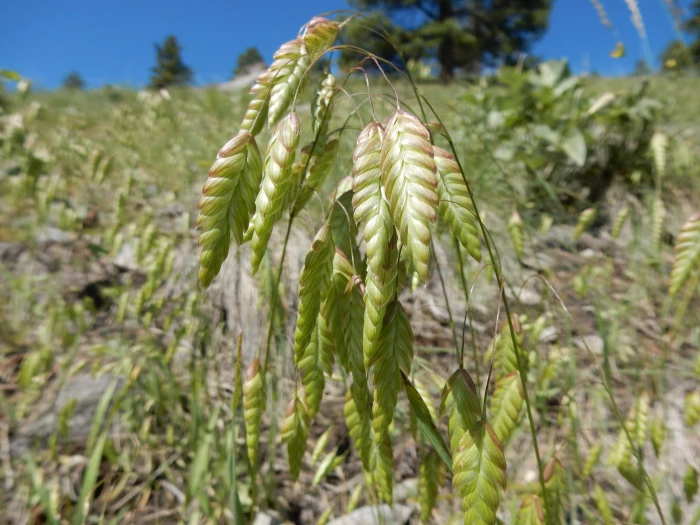Rattlesnake Brome
(Bromus briziformis)
Rattlesnake Brome (Bromus briziformis)
/
/

Matt Lavin
CC BY 4.0
Image By:
Matt Lavin
Recorded By:
Copyright:
CC BY 4.0
Copyright Notice:
Photo by: Matt Lavin | License Type: CC BY 4.0 | License URL: http://creativecommons.org/licenses/by/4.0/ | Rights Holder: Matt Lavin | Publisher: iNaturalist | Date Created: 2018-06-25T11:49:43-07:00 |

























Estimated Native Range
Climate Requirements for Key West, Florida
| This Plant | Your Site | Plant Suitability for Your Location | ||
|---|---|---|---|---|
| • Precipitation | 7" - 76" | 40" | Aquatic | Aquatic |
| • High Temp. | 60°F - 94°F | 89°F | Your summer temperatures are normal for this plant. | Excellent |
| • Low Temp. | -20°F - 40°F | 64°F | OK, but your winter temperatures are warmer than normal for this plant | OK |
This plant may not grow well at your location - your precipitation is too high.
Summary
Bromus briziformis, commonly known as Rattlesnake Brome, is an annual grass originating from Eurasia. It has naturalized across various regions, including North America. This species typically grows to a height of 8-31 inches (20-78 centimeters) and is characterized by hairy leaf sheaths and lax, secund panicles that give the plant a nodding appearance. The panicles bear resemblance to a rattlesnake’s tail, hence the common name. Rattlesnake Brome thrives in a variety of habitats, including disturbed sites, grasslands, and open woodlands.
Rattlesnake Brome is not commonly cultivated but may be found in wildflower mixes for naturalistic plantings. It prefers full sun to partial shade and can tolerate a range of soil types, provided they are well-drained. While it is not known for significant ornamental value, its ability to grow in poor soils and its resilience to drought conditions can make it a useful species for erosion control or restoration projects. However, its potential invasiveness should be considered before planting, as it can spread rapidly and outcompete native vegetation.CC BY-SA 4.0
Rattlesnake Brome is not commonly cultivated but may be found in wildflower mixes for naturalistic plantings. It prefers full sun to partial shade and can tolerate a range of soil types, provided they are well-drained. While it is not known for significant ornamental value, its ability to grow in poor soils and its resilience to drought conditions can make it a useful species for erosion control or restoration projects. However, its potential invasiveness should be considered before planting, as it can spread rapidly and outcompete native vegetation.CC BY-SA 4.0
Plant Description
- Plant Type: Grass
- Height: 1.5-2.5 feet
- Width: 1-2 feet
- Growth Rate: Rapid
- Flower Color: N/A
- Flowering Season: Spring
- Leaf Retention:
Growth Requirements
- Sun: Full Sun, Part Shade
- Water: Low
- Drainage: Fast, Medium
Common Uses
Border Plant, Low Maintenance, Rock Garden
Natural Habitat
Originating from southwest Eurasia and naturalized in disturbed sites, grasslands, and open woodlands
Other Names
Common Names: Shivery Grass , Rattlesnake Chess , Rattle Brome , Rattlesnake Grass , Quaking Grass
Scientific Names: Bromus briziformis , Bromus brizaeformis , Bromus briziformis var. aristata , Bromus briziformis var. dasyanthus , Bromus briziformis var. dasyanthus , Bromus briziformis var. thalysianus , Bromus dasyanthus , Bromus squarrosus var. muticus , Serrafalcus briziformis
GBIF Accepted Name: Bromus briziformis